| The Praying Mantis, or Praying Mantid is the common name for an amazing ‘preying’ insect’ that camouflages itself so well that it is often overlooked. Despite the very descriptive misnomer ‘Preying Mantis’ is incorrect. The name comes for their calm and rarely disturbed prayer- like stance while they hunt.
This picture came from a friend which got me thinking, where are mine? |
A Close Encounter with the Furred Kind.
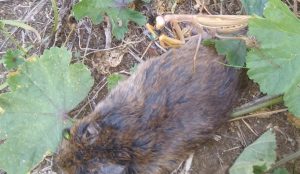 |
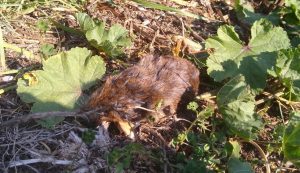 |
Aside from the introduced Chinese Mantids peddled by Amazon, the most common species in the Pacific Northwest is the European mantid (Mantis religiosa). Praying mantids are most often seen in the garden from mid-summer to mid-autumn and they begin life as a bright green changing after each molting. After laying numbers of hard-foam egg cases that usually overwinter attached to branches and trunks, they can also be found attached to buildings, warm discarded tires or in my case a plastic nursery pot.
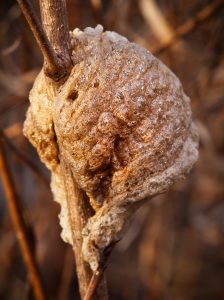 |
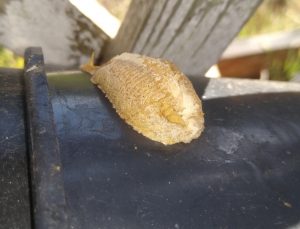 |
Being alpha insect predators second only to the dragonfly they will feast on whatever insect is available, including bees but only some very large mantids can take down a hummingbird or a RAT. They, however, CAN prey upon beehives terribly. RATS NO, but they welcome taking advantage of carrion that attracts other insects.
This mantis simply was waiting to prey upon the flies that came to the rat. Totally placid, I picked her up and she observed me in puzzlement seemingly to beseech me “Please put me down and let me finish my meal.” The mantis simply was waiting to prey upon the flies that came to the rat.
The next day, the mantis was still there at the fly drive through the morning. Sadly, while watering the nearby plants, wetting the corpse seemed to drive it away.
My next issue was to find an egg case as this Mantis seems to have been in a final molt and the egg case (ootheca) appeared like magic a week later. The coloration of the mantis was also a perfect adaptation to the dry withered grasses of October.
Mantids are typically killed off by the first frosts of autumn.
| Warmer climates have far more exotic and more colorful mantids.
I love this Giant Devils (Mantis Idolomantis Diabolica). The Conductor is ready. Silence please!!! |
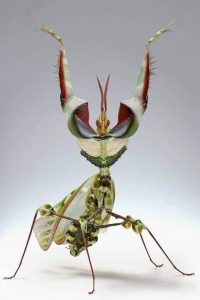 |
Not to be outdone, here are two other beauties: The Orchid Mantis and the Purple mantis, Empusa fasciata. Between beetles and insects like this, one can seriously doubt the human myth of a creator in HIS image.
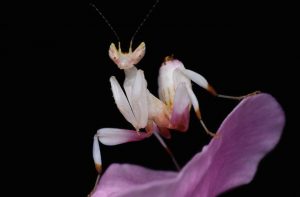 |
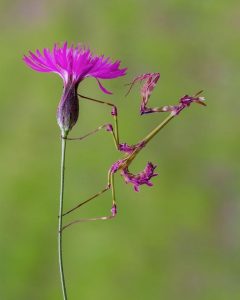 |
Being a woke fellow, I think I will come across those gates fairly safely unless it is a Molluscian God. In that case my issue with slug and snail genocide will weigh heavily.
My vision of the creator who awaits me. Or it may be a MANTIS in a dark mode.
 |
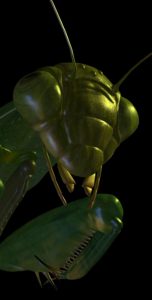 |
A question asked: Can Mantids eat a Locust. Sure they can!!! You may even find husks of dead locusts as the Mantis will eat out the insides starting with the brain, leaving the hard exoskeleton behind.
(C) Herb Senft 2022

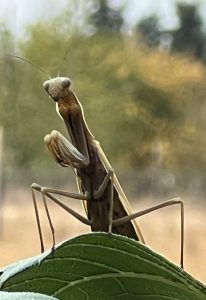

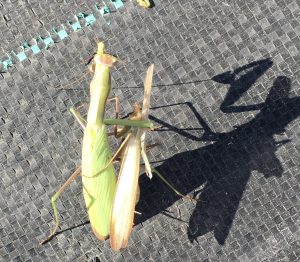
Changing mantis colors usually are a response to changes in the seasonal temperature and humidity. Even light intensity contributes to color changes. |When molting the mantis not only can grow bigger but change to a new outfit. Spring colors when everything is green is perfect for a green mantis who is a master of camouflage. As summer comes on and things dry out they often become more brown to match the drying grasses Environmental positioning also reflects this. A mantis living in trees will often reflect the color of the bark it lives in. There also are basic startup differences depending on the species. Our most common Washington form is Mantis religiosa (from Europe) is typically the green praying mantis, and the Chinese one (sold by Amazon) can vary from overall green to brown.